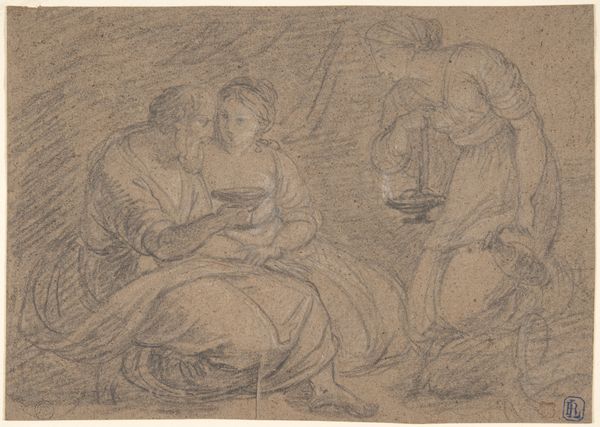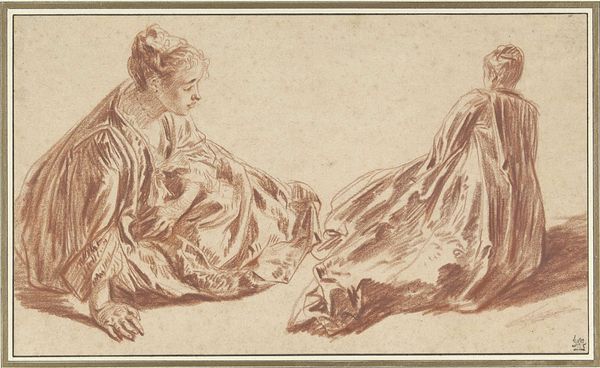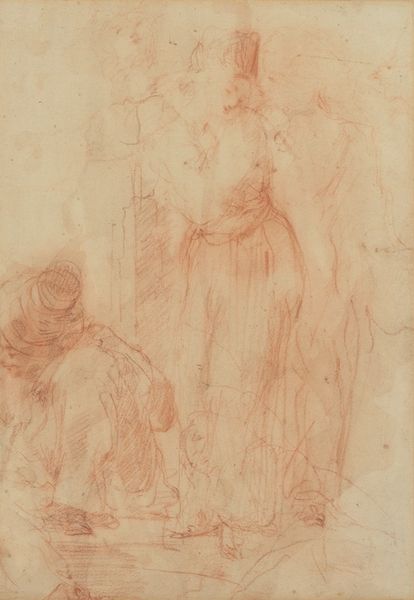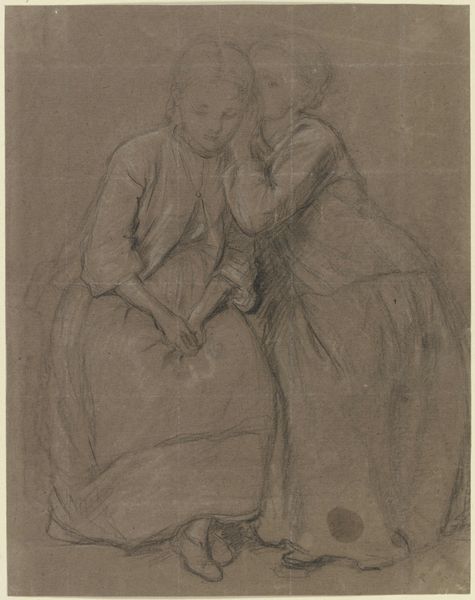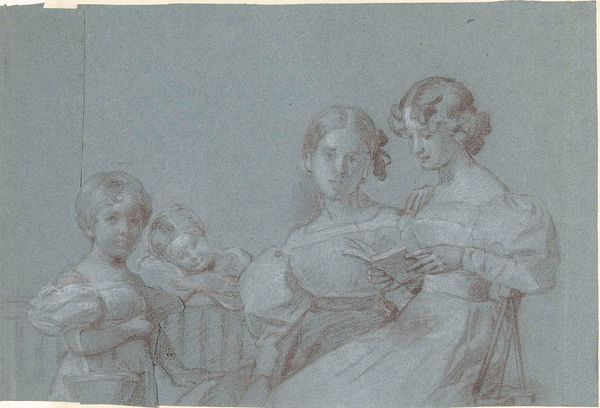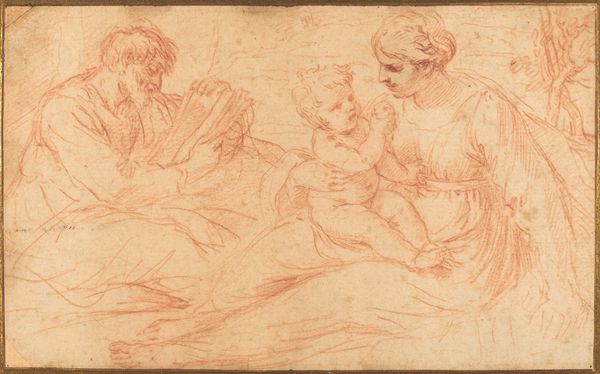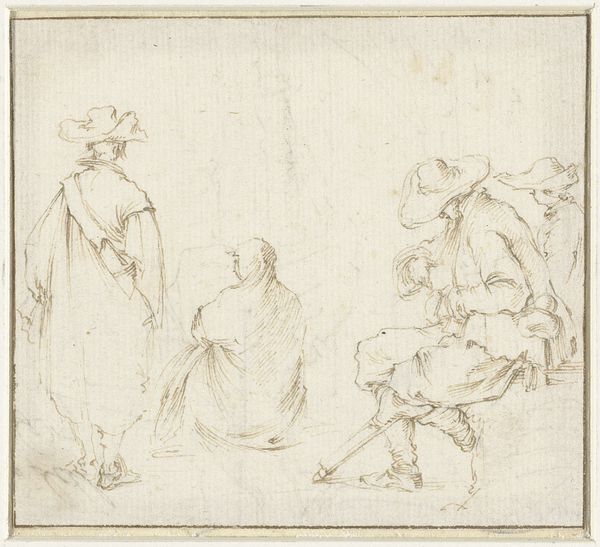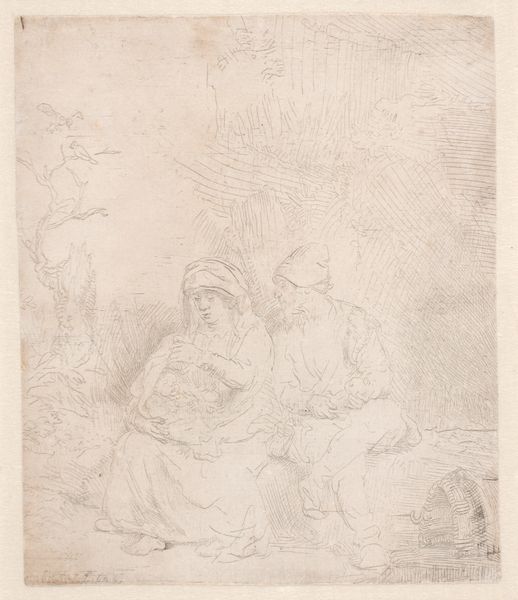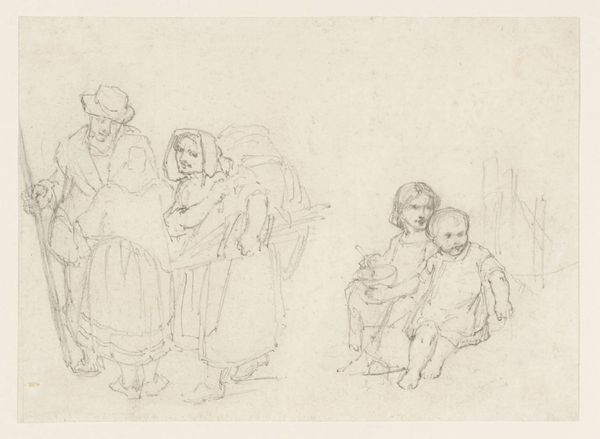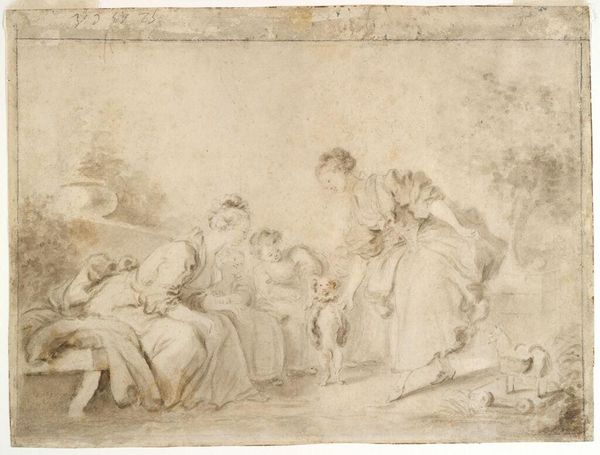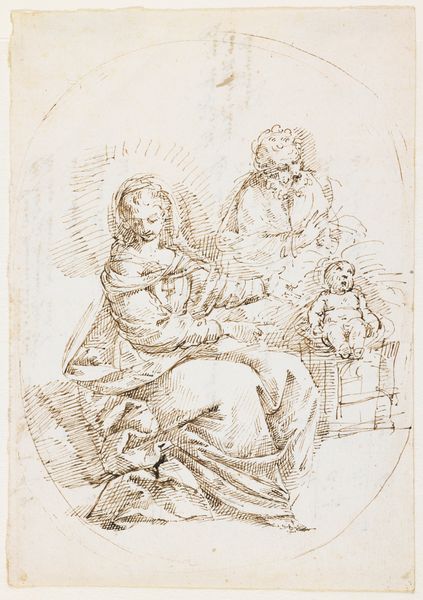
Mendicant Family of a Fallen Hero (Scena simbolica--Gruppo di famiglia dell'eroe caduto con elmetto) c. 1920
0:00
0:00
print, charcoal
#
portrait
#
narrative-art
# print
#
pencil sketch
#
charcoal drawing
#
figuration
#
pencil drawing
#
group-portraits
#
portrait drawing
#
charcoal
#
italian-renaissance
Dimensions: sheet (cut to plate): 39.37 × 59.37 cm (15 1/2 × 23 3/8 in.)
Copyright: National Gallery of Art: CC0 1.0
Curator: Looking at this print, I'm immediately struck by the overwhelming sense of melancholy. It’s sepia tones contribute to a somber mood that permeates the entire composition. Editor: This is Ernesto Bazzaro's "Mendicant Family of a Fallen Hero," created around 1920. Bazzaro captured not just a portrait, but a symbolic scene reflecting Italy's socio-economic landscape following the First World War. Curator: Symbolic is right. Observe the lines created by Bazzaro. The texture here is delicate, it appears that a combination of pencil and charcoal might have been used in order to provide contrast to the figures. Yet it doesn’t quite relieve that sense of emptiness. Editor: Consider how the image positions a wealthy woman, presumably from the hero's family or estate given that letter in her hand, interacting with the bereaved family. The mother cradles her child and holds the fallen hero's helmet— a potent symbol of both loss and perhaps the burden of legacy. This image highlights societal disparities and the human cost of war. Curator: Yes, there is a sharp contrast embedded by this piece that highlights social themes and relations with the two groups of the portrait. A Formal approach, looking specifically at what it is that has been produced in conjunction with artistic movements, gives insight into why Bazzaro constructed his portrait in this format, emphasizing on how to engage with society by addressing certain figures, while alluding at others with texture. The soft focus draws a bit of your attention, but one keeps going back and wondering the nature of this interaction due to its heavy contrast in composition between the subjects. Editor: The use of the Italian Renaissance style also carries significance. Bazzaro intentionally recalls the Renaissance emphasis on humanism while contrasting it against post-war realities. In that era the art emphasized harmony and proportion—principles inverted here to demonstrate a broken world. Curator: Ultimately, the beauty of art like this lies in how it provokes ongoing dialogue between past struggles and current challenges in societies. This provides understanding for a number of topics when understanding social dynamics. Editor: Indeed. The formal elements draw us in and the historical context encourages critical thought on matters that still resonate today.
Comments
No comments
Be the first to comment and join the conversation on the ultimate creative platform.
